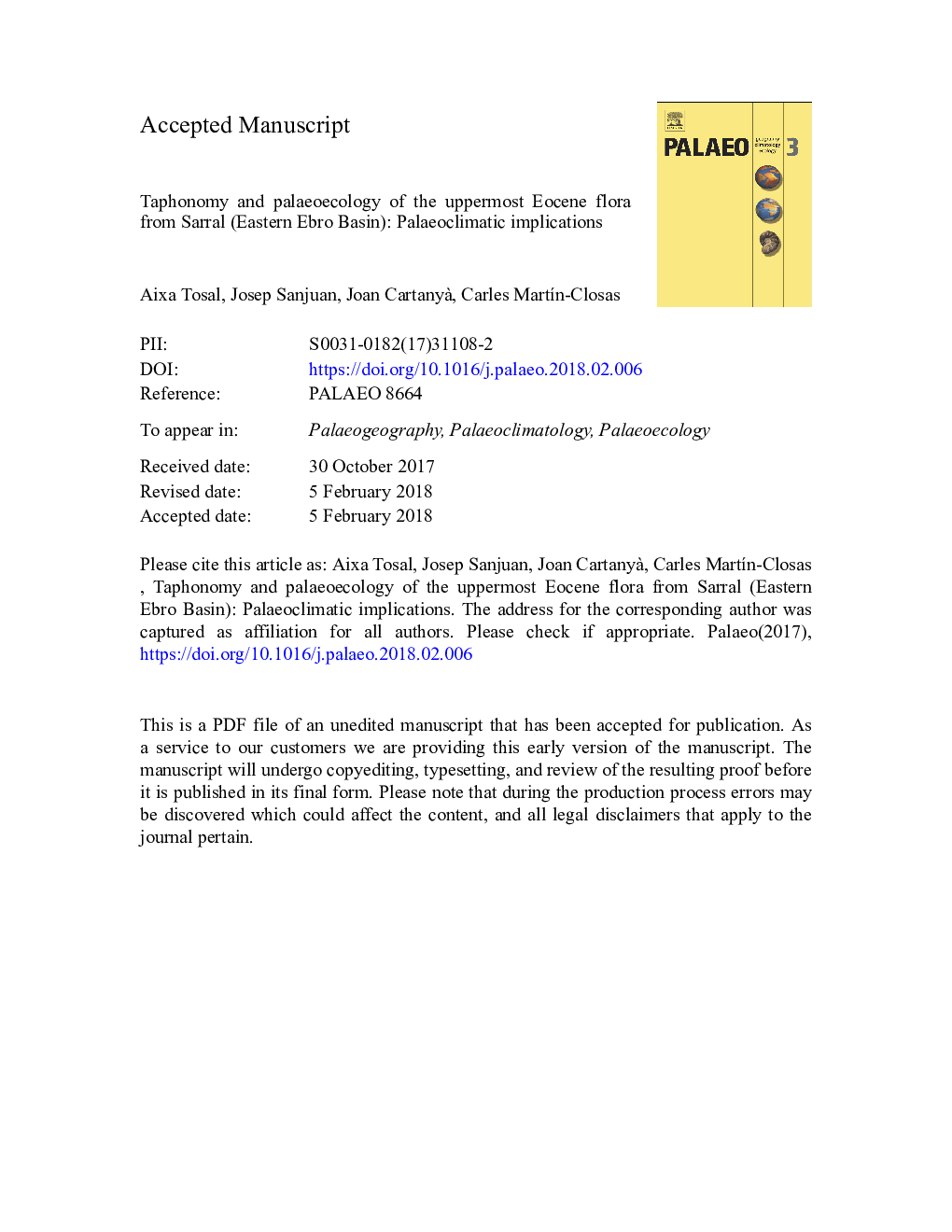| کد مقاله | کد نشریه | سال انتشار | مقاله انگلیسی | نسخه تمام متن |
|---|---|---|---|---|
| 8868253 | 1622095 | 2018 | 59 صفحه PDF | دانلود رایگان |
عنوان انگلیسی مقاله ISI
Taphonomy and palaeoecology of the uppermost Eocene flora from Sarral (Eastern Ebro Basin): Palaeoclimatic implications
دانلود مقاله + سفارش ترجمه
دانلود مقاله ISI انگلیسی
رایگان برای ایرانیان
موضوعات مرتبط
مهندسی و علوم پایه
علوم زمین و سیارات
فرآیندهای سطح زمین
پیش نمایش صفحه اول مقاله

چکیده انگلیسی
The global trend towards a colder and more arid climate at the Eocene-Oligocene boundary triggered significant changes in the European flora. Here we study the latest Eocene (Priabonian) flora from lacustrine deposits at Sarral in the Ebro Basin, Catalonia, Spain, to evaluate vegetation changes near this boundary. Three main taphofacies are recognised: (1) assemblages composed of small, size-sorted leaves represented by Zizyphus, Fabaceae leaflets and Pinus needles, inferred to be wind transported from open woodlands located distal from the lake; (2) assemblages composed of whole unsorted leaves belonging to Salicaceae, Myricaceae (Myrica arensi and Comptonia schrankii), Lauraceae (Daphnogene and Laurophyllum) and helophytic plant stems, interpreted as remains of a riparian community; (3) assemblages comprising disarticulated organs of Tetraclinis, Cupressaceae and a few torn leaves of Myrica arensi and Salicaceae, interpreted as derived from riparian or open woodland vegetation upstream from the lake. The Priabonian Sarral flora is similar to the nearby early Oligocene flora of Cervera, making it difficult to distinguish the effects of the Eocene-Oligocene climatic crisis upon the vegetation. Sedimentological analysis indicates that the Sarral leaf bed represents deposition during a drier period of small-order climate cycles, whereas the Cervera flora represents vegetation during a wetter period of a similar cycle but under the cooler and more arid environmental conditions of the early Oligocene, thereby disguising large-scale Eocene-Oligocene climatic change. Understanding such short-term sedimentary and climatic cycles is crucial in order to correctly interpret the regional climatic signal based on leaf physiognomy.
ناشر
Database: Elsevier - ScienceDirect (ساینس دایرکت)
Journal: Palaeogeography, Palaeoclimatology, Palaeoecology - Volume 497, 15 May 2018, Pages 66-81
Journal: Palaeogeography, Palaeoclimatology, Palaeoecology - Volume 497, 15 May 2018, Pages 66-81
نویسندگان
Aixa Tosal, Josep Sanjuan, Joan Cartanyà , Carles MartÃn-Closas,